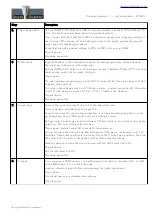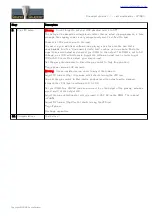
Document revision 1.1 – Last modification : 27/06/11
MP66 Setup guide
Safety warning
THIS KIT IS NOT FOR BEGINNERS !
This kit uses high and potentially lethal voltages. Under no circumstance should someone undertake the realisation of
this kit unless he has full knowledge about safely handling main powered devices.
Follow the testing procedure in the shown order. If one test fails, find out the problem, correct it then resume.
Always unplug power between steps and discharge high voltage capacitors as described below.
Always use an insulated screw driver to adjust the trimmers. There are several points that carry high voltage that may kill
you if you accidentally touch them.
It is very easy to create shortcuts when moving the DMM probes. Be very careful because most of the time, shortcuts
are fatal to the circuits.
Step
Description
1.
Jumpers setting
Install 2 jumpers on JMP1 to set the transformer ratio to 1:5.
2.
Short circuit check
Do a basic short circuit check with your digital multimeter (DMM) set to Ohms :
Between Test point TP2 (GND) and TP7 (V+300).
You should get several hundred of kilo-Ohms. If it is not the case, find out and fix the
short before applying power.
3.
Test setup
At this point, you need an assembled and wired SKMP case.
Install your MP66 in 2 free slots. Do not forget to place the mylar insulator sheet
underneath the PCB. Connect a ribbon cable between the DI02 and the MP66 board
(look at the “SKMP assembly guide”). Disconnect all other mic pre's by removing the
ribbon cables.
Connect the power supply leaving the mains plug disconnected.
Make sure NO tube is installed on your MP66 board .
Prepare a discharge cable for the high voltage capacitors.
4
Discharge cable
IMPORTANT
The circuit uses 300V DC voltages. Several
electrolytic capacitors are charged to this
potential. When power is removed, the tube
heaters turn off, leaving the tubes in a high
impedance state preventing the capacitors
discharge. This means that very high potentials
will remain on the circuit many minutes after the
power has been removed.
Before putting your fingers on the circuit, it is
necessary to discharge the capacitors.
Use a piece of insulated wire and a 1K to 10K
resistor connected to ground. The ground can
be taken on the ground bar that links the XLR plugs.
To discharge the caps, touch TP7 a few seconds with the resistor leg.
Copyright ©2008 SoundSkulptor


















